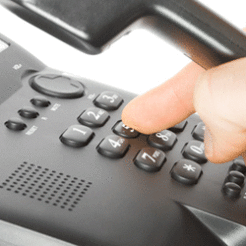Bethan Holloway defends the role of the telephone in the new age of digital fundraising.
Digital giving is on the rise – as JustGiving’s £1bn milestone earlier in the year evinced. But with only 15 per cent of donations being made digitally in the UK according to the Institute of Fundraising and social media generating only fledgling income, it may not be time to shed traditional fundraising tools just yet.
Particularly now the ‘typical donor’ is multimedia-tasking and inclined towards platforms that support interaction, a fundraiser needs to use every tool in their arsenal over multiple stages to attract and keep a donor’s attention. So where does the traditional telephone fit into this maelstrom of new media?
Personalising the impersonal
The problem with our use of digital and mobile technology is that it can be fleeting. When we ‘like’ a charity on Facebook, or re-tweet 140 characters our action is instantaneous and non-committal. Likewise, when we text a short code to donate, the act of giving is quick, anonymous and detached.
A timely bit of stewardship via a ‘non-fundraising’ telephone call can personalise this experience and increase the lifetime value of the supporter. Such a phone conversation, might update the new or existing donor with what the charity is up to, how their gift is helping and how the donor might consider interconnecting more closely with the cause. This can pave the way for future asks and reduce attrition.
Enhancing SMS
The phone’s ability to extract value from other channels is clearly demonstrated in multi-stage donor recruitment, in particular SMS.
However, although this is a quick and easy method, do not just take the gift; have a journey planned and a strategy to get back in touch. Christian Aid’s ongoing mosquito nets campaign – ‘Malaria kills a child every 45 seconds. Text £3. Buy a net. Save a life’ – does more than just solicit microdonations via SMS. Every inbound text becomes a verified ‘warm’ contact for a telephone call. Telephone fundraisers are currently converting 10 per cent of these SMS microdonors into regular givers with an average annual gift of £90.
Digitising and refining street prospecting
You can also use the telephone to enhance and digitise street fundraising. Prospects can be approached face-to-face and asked to make a microdonation via their mobile phone, which in turn validates the donor’s data for a follow up call later.
The microdonation only targets those genuinely interested in giving and offsets the cost of street fundraising, thereby increasing the return on investment when the direct ask is made over the phone.
Tapping into online leads
While websites, email and social media platforms continue to open doors to new supporters, the telephone can convert digital users and campaigners into givers when integrated shrewdly.
For a while, charities have been incorporating ‘register now’ buttons on their websites, where a potential donor might add contact details which the charity can later sift through. But new technology in the telephone fundraising sector is speeding up ‘website prospecting’. A donor can click a ‘call me’ button – part of an application programme interface (API) built into the charity’s website – which feeds their details directly into a call centre.
But despite the huge opportunity this presents, there has been very little use of this technology in the sector to date.
Bethan Holloway is client services director at telephone Pell & Bales









